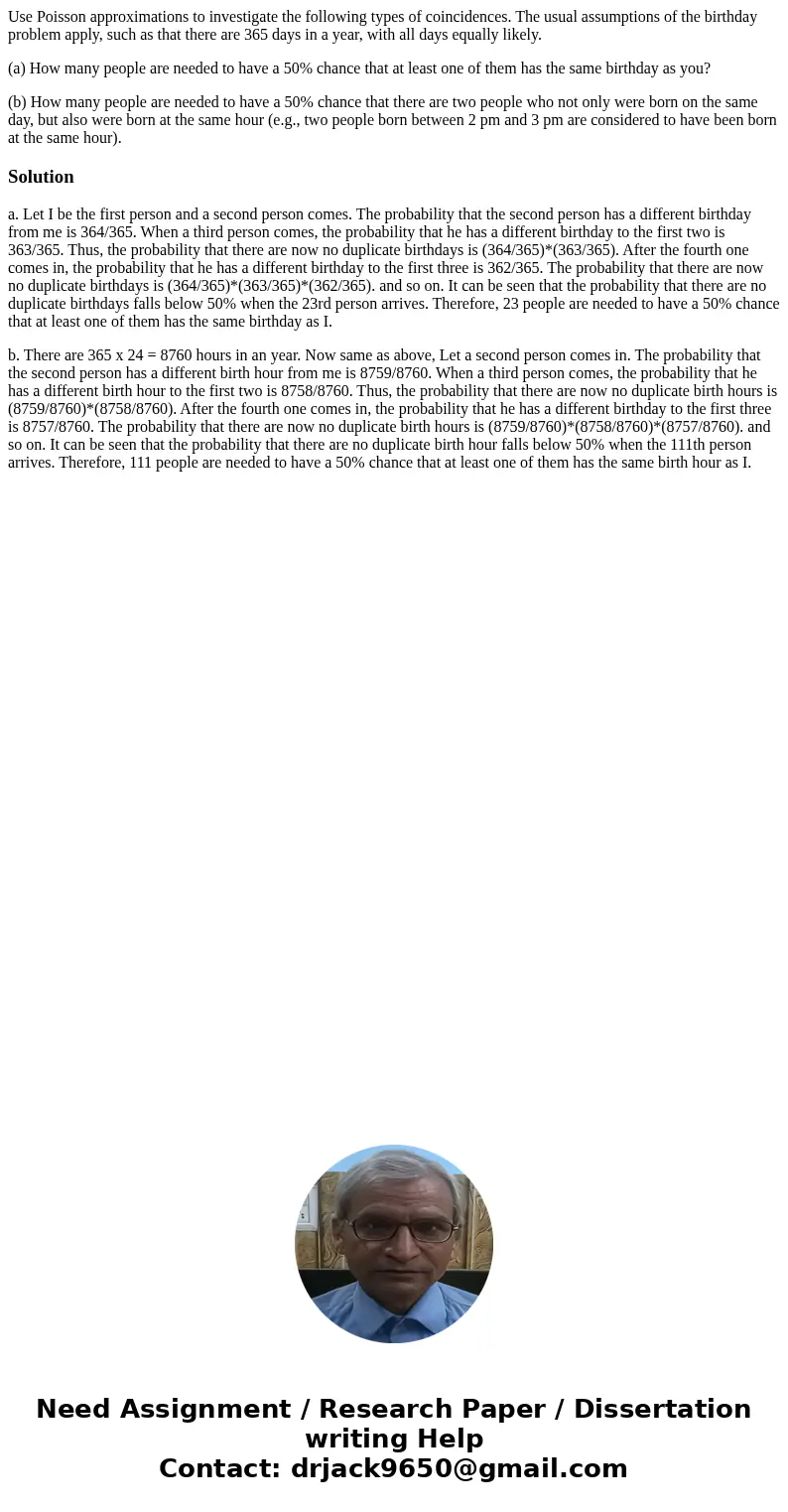Use Poisson approximations to investigate the following type
Use Poisson approximations to investigate the following types of coincidences. The usual assumptions of the birthday problem apply, such as that there are 365 days in a year, with all days equally likely.
(a) How many people are needed to have a 50% chance that at least one of them has the same birthday as you?
(b) How many people are needed to have a 50% chance that there are two people who not only were born on the same day, but also were born at the same hour (e.g., two people born between 2 pm and 3 pm are considered to have been born at the same hour).
Solution
a. Let I be the first person and a second person comes. The probability that the second person has a different birthday from me is 364/365. When a third person comes, the probability that he has a different birthday to the first two is 363/365. Thus, the probability that there are now no duplicate birthdays is (364/365)*(363/365). After the fourth one comes in, the probability that he has a different birthday to the first three is 362/365. The probability that there are now no duplicate birthdays is (364/365)*(363/365)*(362/365). and so on. It can be seen that the probability that there are no duplicate birthdays falls below 50% when the 23rd person arrives. Therefore, 23 people are needed to have a 50% chance that at least one of them has the same birthday as I.
b. There are 365 x 24 = 8760 hours in an year. Now same as above, Let a second person comes in. The probability that the second person has a different birth hour from me is 8759/8760. When a third person comes, the probability that he has a different birth hour to the first two is 8758/8760. Thus, the probability that there are now no duplicate birth hours is (8759/8760)*(8758/8760). After the fourth one comes in, the probability that he has a different birthday to the first three is 8757/8760. The probability that there are now no duplicate birth hours is (8759/8760)*(8758/8760)*(8757/8760). and so on. It can be seen that the probability that there are no duplicate birth hour falls below 50% when the 111th person arrives. Therefore, 111 people are needed to have a 50% chance that at least one of them has the same birth hour as I.

 Homework Sourse
Homework Sourse